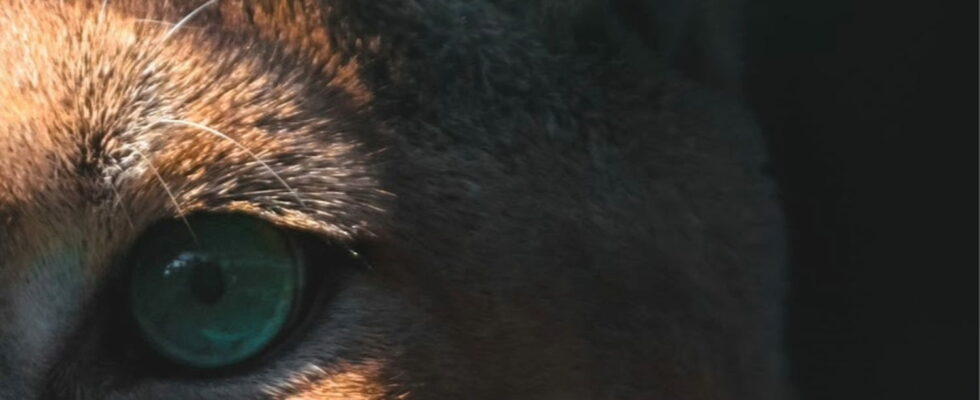A very old ancestor of the cat has been identified thanks to a fossil. He was very different from those we know today.
In France, half of households have pets. If fish dominate the ranking by representing 39% of these animals in 2022, they are followed by cats which account for 20% and there are 14.9 million living in a French household. The Maine Coon, the Sacré de Burma, the Bengal and the Ragdoll are the favorite breeds of the French. If they are very different, they descend from a common ancestor.
According to a recent study published in the journal PeerJcats have, in fact, evolved from a fierce saber-toothed predator, living in North America 42 million years ago, a fossil of which was discovered at a site in San Diego, California. It was named Diegoaelurus vanvalkenburghae and was related to a group of animals called the Machaeroidines. However, today they are completely extinct. “The fossil is particularly useful because the teeth allow us to infer diet and begin to understand how Machaeroidines relate to each other,” explained one of the study’s authors, Dr. Shawn Zack.
This ancestor was, in fact, among the first mammals to have a diet exclusively based on meat. “42 million years ago, mammals were just beginning to understand how to survive on meat alone,” said Dr. Ashley Poust, lead author of the study.
It had thus developed teeth sharp enough to slice flesh and was hypercarnivorous, meaning that its diet consisted of more than 70% meat. All species of the feline family, including cats as pets, are hypercarnivores in the natural state, but this diet can evolve in the domestic environment. But what did this prehistoric animal look like?
This specimen was twice the size of an average domestic cat. He also had a curved bony chin to protect his long teeth. It thus precedes other animals that arrived later resembling cats such as the nimravids, extinct felines having lived 10 million years ago, or the homotherium having lived in North America, Africa and Eurasia around 4 millions of years. It thus represents the first known feline predator.
